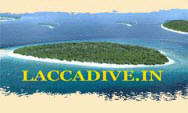|
Coral reefs
are the most productive eco-systems in the world. The growth
of corals and its existence in its virgin greatly depends on
the unpolluted lagoons. The marine biodiversity of India is
represented by rich corals, diverse fish species including
the whale sharks, whales, dolphins and dugong and a plethora
of economically important arthropods and molluscs (Sea
slugs).
The world’s largest marine turtle breeding ground, migratory
waterfowl and Asia’s largest brackish water lake Chilika
adds further values to the coastal and marine habitat and
biodiversity of India.
India is surrounded by the Arabian Sea on the west, the
Indian Ocean in the South and the Bay of Bengal on her East.
The Andaman and Nicobar island chain lies east of the
mainland between the Bay of Bengal and the Andaman Sea. The
Lakshadweep island group is located off India's southwest
coast. Read more at:
Environmental Protection and Awareness
Protecting Our
Beaches
Pollution of coastal
environments threatens the use of beaches as an economic,
recreational, and aesthetic resource. Water quality problems
and debris not only harm the sensitive aquatic habitat in
the near-shore waters but are aesthetically displeasing as
well. Read more at:
Protecting Our Beaches
Also visit
at:
Responsible Travel
|

